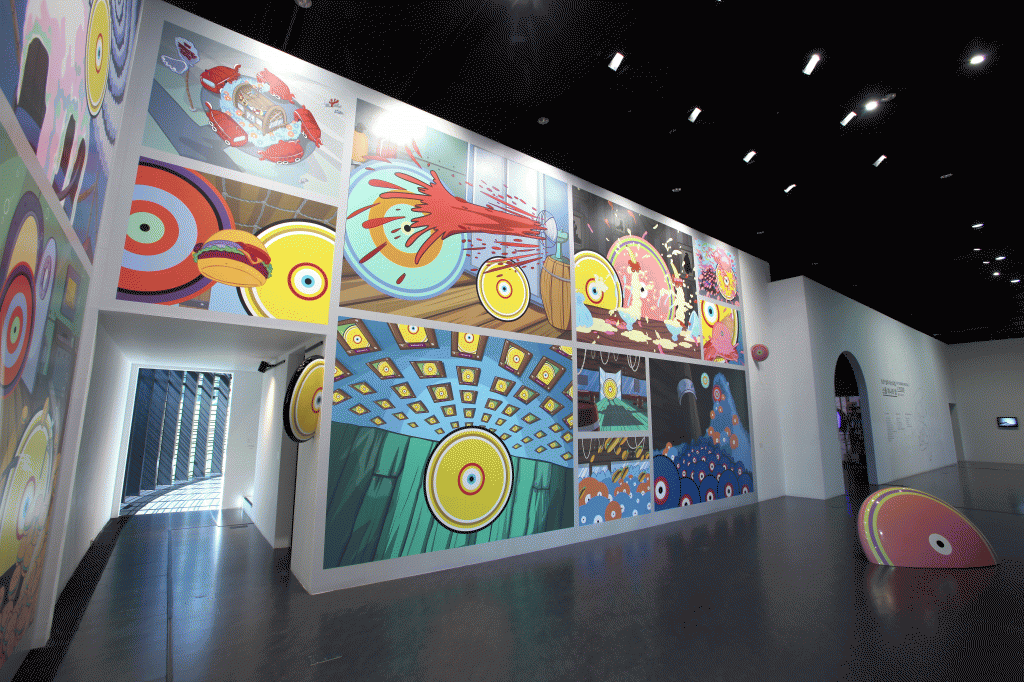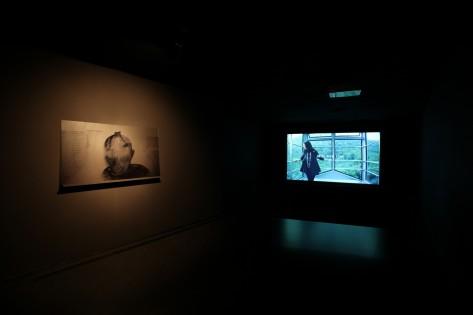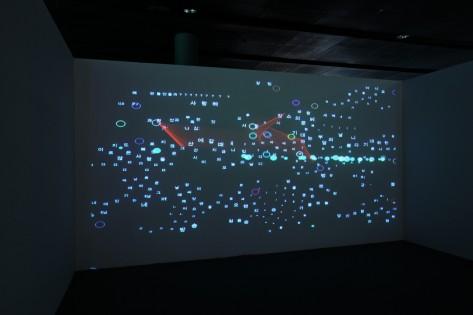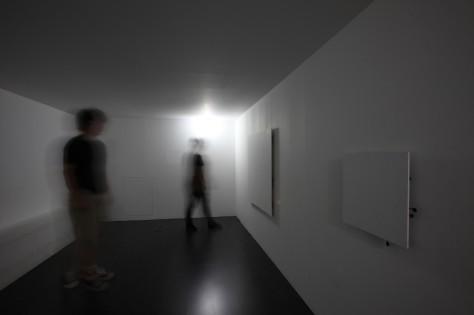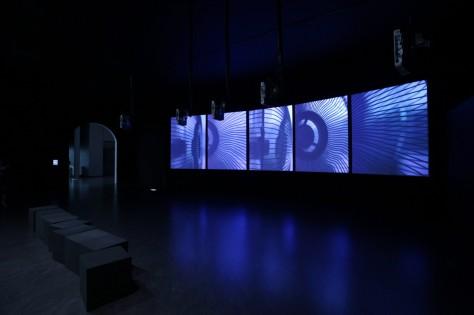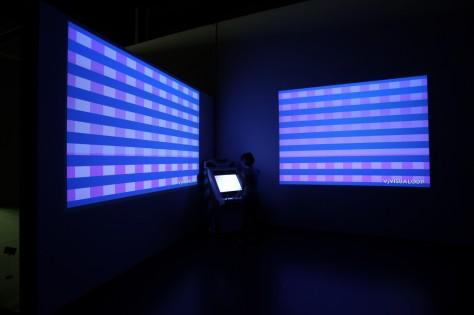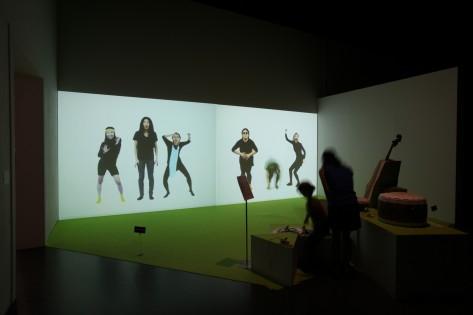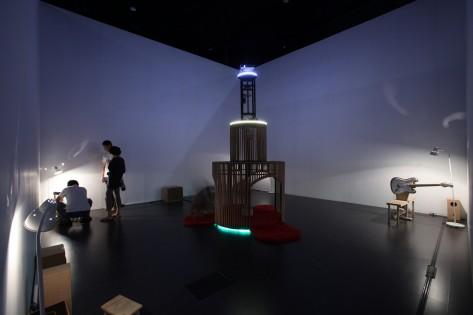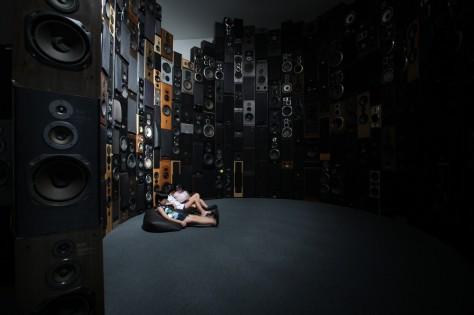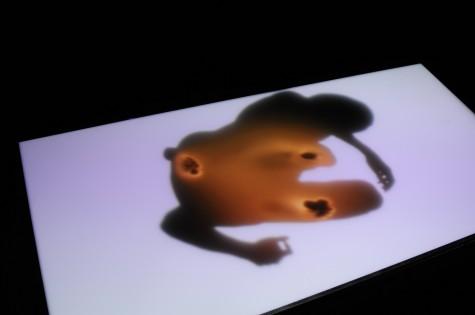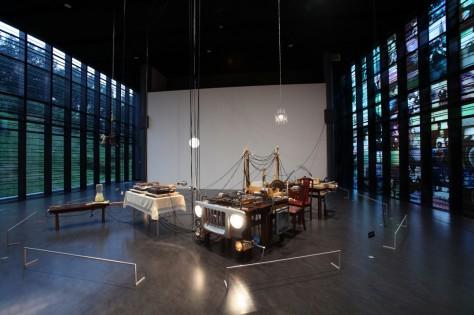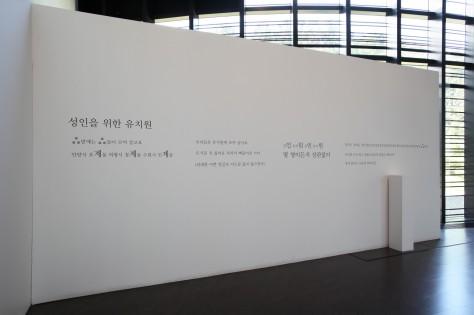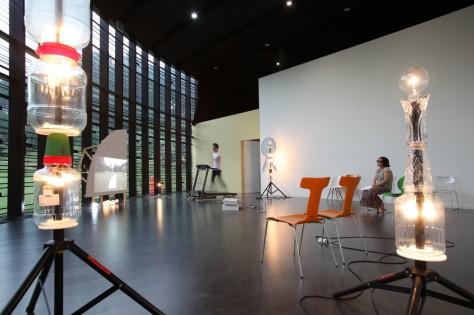“NJP Summer Festival – 21 Rooms,” inspired by Symphony for 20 Rooms, a score composed by Nam June Paik in 1961, begins on Paik’s 79th birthday with twenty works and programs including an exhibition, performances, public programs on the NJP Art Center’s second floor and outdoor stage.
For the purpose of encouraging spontaneous audience participation, Paik’s Symphony for 20 Roomsdiscarded the artist’s performance and promoted an environment of play. Later, part of this groundbreaking music score was actually performed in his first solo exhibition “EXPosition of Music – ELectronic Television” (1963). The score instructed a situation in which (a performer’s) non-performance would create performance (on the audience) or (the audience’s) performance would launch an attack (against a performer). By ensuring the free coming and going of audience members, the score marked the beginning of a new art.
The 20 rooms in the festival were planned with the idea of providing this free coming and going of the audience. We expect that moments of change will occur naturally as the coming and going is repeated and accumulated.
The term “21 Rooms” designates not only different programs and works comprising the festival, but also the score of the whole festival which is to be completed by audience participation. In fact, what determines the extension of this eight-week long festival, featuring performances, an exhibition, education programs and workshops, is the score which connects the 20 rooms and the audience coming and going in and out of them.
The scores offered by the participating artists can be used as a poet, a life motto, an exhibition guide, or anything else as the audience likes. During the festival, the audience crosses genres and spaces, moving among the 20 rooms (works), and completes the space of “unblind” participation, or the 21th room, exactly as was instructed in Paik’s Symphony for 20 Rooms.
Paik says, “The wise will play a wise tune and the foolish a foolish tune.”

A Taipei-based artist Agi, CHEN has worked with imaginary images of sci-fi cartoon characters, producing such works as The Key Frame, Function Color, etc. These characters are arranged along with geometric figures in the colors shared with them and thereby conjure up the rest of the image which is stored in their memory. By mediating between imagination and abstraction, Chen stimulates the audience’s imagination.

Media artist Yang-ah Ham’s films have dealt with various emotions, illusions and mysteries revealed in human relationships. Recently, he focused on the absurdity and incomprehensibility of life through hisAdjective Life in the Nonsense Factory (2010). Invisible Clothes (2008), his 14-minute single channel video which is a quasi-sci-fi movie about the conversation between a learned man and a fashion designer on invisible clothes, reflects upon one’s ego constituted by the gaze of others and the subject perceiving that ego. An abundance of metaphors and satire exposes the absurdity of contemporary society, which constantly produces human desire.

Haeyoung Kim, a.k.a. Bubblyfish, a New York-based sound artist, majored in music in University of California at Berkeley and received her master’s degree in design and technology in Parsons the New School for Design. She has explored the realm of experimental sound art ranging from VJing using an 8-bit engine to interactive sound works with smart phones. Moori, which is to be played in this festival, is an interactive audience participatory audio-visual performance to convert text messages composed by mobile user to sounds and images with emphasis on Fluxus-like instantaneousness, simultaneity, and the role of an artist as a mediator.

Artist duo Pors & Rao is formed by two artists, Aparna Rao (India) and Søren Pors (Netherland) who studied together in Interaction Design Institute Ivrea, Italy. In PYGMIES, the pygmies on panels respond to the ambient noise of the space and the visitors, each of them moves differently according to loud or soft sound. Their behavior pattern is completely subordinate to their environmental factors in this way at first but gradually begins to put limitations on the movement of the visitor as he or she comes to perceive it.

Yoonseoung Chang’s Camera Test 5 is composed of five screens showing subsequent five images of an exploding light bulb, accompanied by a sound from a movie scene. The uneasy feeling and strange atmosphere caused by the encountering between irrelevant images and irrelevant sound will stir the audience to think about the relationship between image and sound.

VjVISUALOOP, an Italian media artist, had primarily worked with electronic music and graphic art until the early 1990s but recently became fascinated with VJing, creating new video-performing projects. Protopixel HARDcade, shown in this exhibition, is a software made by using 1980s game engines to help the visitors to produce new images and sounds. After simple manipulation, you can participate in creating beautiful images and sounds.

Image, Instrument by Lee Hwa-Jin+Bahc Mioc is a musical instrument which makes not sounds but images when performed. Inspired by the synesthetic phenomenon that when the sound wave reaches the ear, it makes you not only hear the sound but also see some images, the artists intended to show invisible sounds and rhythms. While you cannot hear them, you can enjoy them newly and amusingly.

Changsun Koh has inquired into the surplus which the development of scientific technology has generated and asked about the absurd situations and system of contemporary society. For this exhibition, Changsun produced a sound tower which would remind you of Paik’s The More the Better. Its sound created by audience participation may be heard like noise but at some point, changes to a splendid harmony. By making the audience find themselves make noises, the artist depicts the scenes of contemporary society.

Seung Young Kim who has worked on the theme of memory and communication presented Wall made by five hundred used loudspeakers. The artist opens up a passage by stacking used speakers which he has been collected for 10 years. The visitors take off their shoes, enter the passage, and appreciate the sound of everyday life from the five hundred speakers.

Richi Owaki studied Design engineering faculty in Tohoku University of Art and Design. His workSkinslides, three displays embedded in the floor show projections of a dancer’s movements, footstep, etc. and the visitors walk on them. The distorted images of the human body projected on the floor may suggest Francis Bacon’s figure paintings, but actually are based on images of bodies damaged and broken by war. By passing through the room, the visitors come to participate in the ‘ritual’ arranged by the artist.

Ujino’s The Rotators is a human scale drum machine using the technologies of rock’n roll, a kind of sound sculpture / performance project which he could create out of locally sourced second hand parts, DJ turntable, electric guitar, blender, hair dryer, power tools, wood furniture, car and so on. Ujino had opportunities to combine them in many locations throughout the world, as a sort of cross cultural project in global monoculture. Its genesis is the mass consumerism, the disposable culture he was raised within, up until 1989, with the end of a Japan that was constantly growing materially richer. Inside him, a shallow, lightweight optimism cultivated through that times and a feeling of shame directed at the consumption and wastefulness of today exist side by side, and this serves as a booster for energies to drive it.

Wol-Sik Kim’s Kindergarten for Adults is a performance based on the artist’s reinterpretation of “Kindergarten der Altern,” the phrase appearing in Paik’s 1963 solo exhibition poster. A docent program is provided during the festival. By attempting at a critical reflection on the audience’s attitude toward contemporary art as well as the culture of the museum to mediate art, the performance materializes the artist’s view of an artist as “an artist as a mediator” and discloses and intervenes in the relationship among the audience, artists, and museums.

Media artist Yangachi’s Movie, Round, Smooth and Truly Aristocratic converts a specific space and situation of the NJP Art Center into a virtual reality and screens this special kind of reality. The visitors are given an audio guide and watch the ‘movie scenes’ played in the building of the center, coming into the ‘movie.’ The artist asks “Is it indeed possible to distinguish virtual reality from reality? Or, is what we see as real real?















